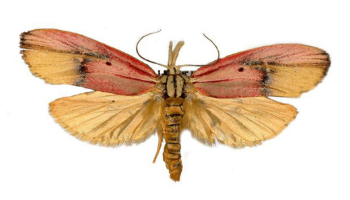The latest issue of the Academy’s journal, Historical Records of Australian Science, has a historical article, biographical memoirs, a selection of book reviews and the annual bibliography of history of Australian science.

An intriguing article on Oswald Lower, a bio-geographer, lepidopterist and historian from Broken Hill, reminds us of the astonishing biodiversity of Australia’s fauna and flora, especially in the insect kingdom. A pharmacist and amateur lepidopterist, Lower described almost 1000 valid new species, and his collection of 40,000 specimens forms the nucleus of the outstanding Lepidoptera collection at the South Australian Museum.
The scientists whose lives and work are memorialised in this issue have made a rich and diverse contribution to Australian science. Bill Budd was a founding figure in Australian glaciology, studying a range of glaciological and meteorological topics, including ice-core paleoclimatic studies and relationships between sea ice and climate that remain relevant 50 years after he began to address them.
Ian McDougall was an internationally known Earth scientist who spent most of his career at the Australian National University. He undertook pioneering research on young volcanos, supported the emerging theory of plate tectonics, and established a comprehensive geochronological framework for hominin evolution in eastern Africa.
Ray Martin pursued a successful career as a professor of chemistry at the University of Melbourne and the Australian National University before serving as vice-chancellor at Monash University and later head of the Australian Science and Technology Council (ASTEC). Martin’s field of research was one of the greatest strengths of Australian chemistry, and his memoir was penned by his daughter, Dr Lisandra Martin, also a chemist.
Robert Myers’ 1948 study of the metallurgy of strategically important metals in tantalum and titanium earned him the first Australian PhD awarded for a scientific thesis. He contributed similar studies at Harwell, UK, before becoming foundation professor of metallurgy at the new University of New South Wales, where he later succeeded Sir Philip Baxter as vice-chancellor, leading the university through a challenging period of student and societal unrest with good humour and astute judgement.
The book reviews bring us back to the museum theme with a biography of Allan McCulloch, who added approximately 1,200 fish specimens to the collection at the Australian Museum, and a book by Tom Darragh of Melbourne Museum, who brings together art and technology in his book about engravers and lithographers. An account of exhibitions and the rise of public science in Australia by Peter H. Hoffenberg emphasises the importance of institutions in the history of Australian science.
The annual bibliography of history of science for 2022, is a joint project with the Encyclopedia of Australian Science and Innovation and the Academy’s Historical Records of Australian Science, is included in this issue.
A special issue of the journal is planned for July 2024. It will contain articles about the history of Australasian plant pathology, a scientific discipline that has been of vital importance in combatting disease in Australian and New Zealand agriculture and the pastoral industry. The issue will be sponsored by the Australasian Plant Pathology Society (APPS) with specialist historical contributions by members. A preview can be found in papers that have been published Online Early.
© 2025 Australian Academy of Science